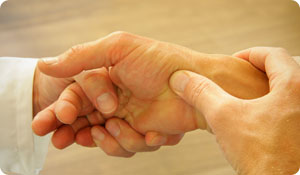
Although your thumb joint is pretty small, having arthritis in that spot can make a big impact on your day-to-day life. Arthritis of the thumb, also called basal-joint arthritis, can cause pain and swelling and can hinder your range of motion. Simple actions that you once took for granted, such as opening a door or typing a letter, can now be difficult at best and impossible at worst. Why do some people get arthritis of the thumb and how can you manage this condition?
What is basal-joint arthritis? Basal-joint arthritis occurs when the cartilage that normally engulfs the ends of the bones at the base of your thumb wear away. The bones rub together and cause pain, stiffness, and damage.
Who gets basal-joint arthritis? As with other types of osteoarthritis, there's no cut-and-dried rule for who contracts this condition. Being heavy may contribute, as may simply getting older, incurring an injury to the thumb joint, or engaging in repetitive motions that involve the thumb joint. There may be a hereditary component, too. Other factors? Being a woman and being older than 40.
How do I know if I have basal-joint arthritis? Usually pain will be your first signal. You may have a tough time with any gripping or grasping motions. Turning a key in a lock, pulling a zipper up and down, or twisting open a jar may all pose challenges due to decreased strength and range of motion. Your thumb joint may also look bony or enlarged.
What can I do to treat the condition? If the pain, stiffness, and swelling aren't bad, you may do nothing. But if the condition is interfering with your life or livelihood, talk to your doctor. Some options are:
- Medication: These may be over-the-counter or prescription.
- Splint: This supports the joint and prevents it from moving too much.
- Exercise: A physical therapist may suggest range-of-motion exercises to improve the mobility of your thumb joint.
- Lifestyle modifications: You may need to purchase special equipment to help you open jars, turn keys, and pull zippers.
- Corticosteroid injections: This is a temporary solution for pain and inflammation.
- Surgery: There are a variety of different surgeries your doctor may consider, depending on your particular arthritis case.





